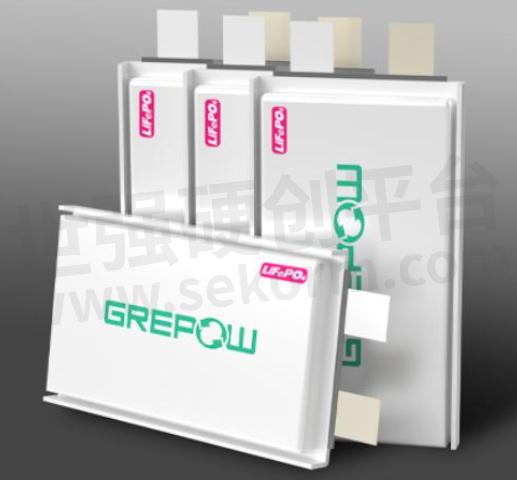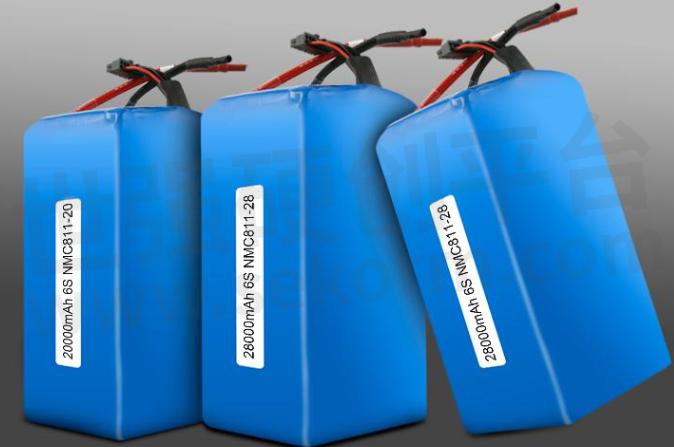LFP vs NMC Battery: Exploring the Differences




In the realm of energy storage, Lithium Iron Phosphate (LFP) and Nickel Manganese Cobalt (NMC) batteries have emerged as two prominent contenders. Both have unique characteristics and applications, making them popular choices for various industries. LFP vs NMC Battery: What's the difference? This article aims to delve into the specifics of LFP and NMC batteries, outlining their features, benefits, and drawbacks.
What is an LFP Battery?
A Lithium Iron Phosphate (LFP) battery is a type of lithium-ion battery known for its stable chemistry. The key components of an LFP battery include a cathode (positive electrode), an anode (negative electrode), and an electrolyte. LFP battery uses lithium iron phosphate as the cathode material, which inherently possesses higher thermal stability compared to cobalt-based chemistries. This makes LFP batteries a preferred choice for applications that prioritize safety and longevity.

Fig.1
What is an NMC Battery?
Nickel Manganese Cobalt (NMC) batteries are another type of lithium-ion battery that employs a cathode composed of nickel (Ni), manganese (Mn), and cobalt (Co). This combination results in a battery with a high energy density, making NMC batteries suitable for applications where compact and efficient energy storage is crucial. These batteries are commonly used in electric vehicles, consumer electronics, and various energy storage applications. The specific choice of NMC formulation depends on the desired balance of performance characteristics for a given application.

Fig.2
Benefits and Downsides of LFP Battery
Lithium Iron Phosphate (LFP) batteries offer several benefits and downsides, making them suitable for certain applications while having limitations in others. Here's an overview of the advantages and disadvantages of LFP batteries:
Benefits of LFP Battery:
◆Enhanced safety: LFP batteries are known for their exceptional thermal stability, reducing the risk of overheating and thermal runaway.
◆Long cycle life: LFP batteries typically have a longer cycle life compared to some other lithium-ion batteries, making them cost-effective over the long term.
◆Environmentally friendly: LFP batteries are considered more environmentally friendly due to their non-toxic and easily recyclable materials.
◆Stable Thermal Performance: LFP batteries exhibit stable thermal performance, meaning they are less prone to overheating.
Downsides of LFP Battery:
◆Lower energy density: LFP batteries generally have a lower energy density compared to NMC batteries, which may limit their use in certain high-energy-demand applications.
◆Limited High-Temperature Performance: While LFP batteries are generally stable under normal operating conditions, their performance may be limited at high temperatures.
◆Reduced Voltage: LFP batteries typically have a lower nominal voltage compared to some other lithium-ion chemistries. This voltage difference may impact certain applications that require specific voltage levels for compatibility.
Advantages and Disadvantages of NMC Batteries
NMC battery comes with a set of advantages and disadvantages, influencing their suitability for various applications. Here's an overview of the advantages and disadvantages of NMC batteries:
Advantages of NMC Batteries
◆High energy density: NMC batteries offer a higher energy density, providing more energy storage capacity in a compact size.
◆Versatility: NMC batteries are versatile and find applications in a wide range of industries, including electric vehicles and portable electronics.
◆Cost-effectiveness: NMC batteries can be cost-effective for certain applications, balancing performance and price.
Disadvantages of NMC Batteries
◆Thermal sensitivity: NMC batteries may exhibit higher sensitivity to temperature variations, requiring additional thermal management systems.
◆Limited cycle life: In some cases, NMC batteries may have a shorter cycle life compared to LFP batteries.
LFP vs NMC Battery: What's the Difference?
LFP and NMC batteries are two distinct types of lithium-ion batteries with differences in their cathode materials, performance characteristics, and applications. The choice between LFP and NMC batteries depends on the priorities and requirements of the application, considering factors such as safety, energy density, cycle life, and cost. Each battery type has its strengths and trade-offs, making them suitable for different scenarios. Here's a breakdown of the key differences between LFP and NMC batteries:
1. Cathode Material
◆LFP Battery: The cathode of an LFP battery is made of lithium iron phosphate (LiFePO4). This cathode material is known for its stability, safety, and thermal resilience.
◆NMC Battery: The cathode of an NMC battery is a combination of nickel, manganese, and cobalt. Different NMC formulations exist, such as NMC 111 or NMC 532, where the numbers represent the ratio of nickel, manganese, and cobalt in the cathode.
2. Safety and Thermal Performance
◆LFP Battery: LFP batteries are recognized for their enhanced safety profile. The lithium iron phosphate cathode contributes to stability and reduces the risk of thermal runaway, making LFP batteries inherently safer.
◆NMC Battery: While generally safe, NMC batteries may exhibit higher sensitivity to temperature variations. Adequate thermal management systems are sometimes required to ensure optimal performance and safety.
3. Energy Density
◆LFP Battery: LFP batteries have a lower energy density compared to NMC batteries. This means that, for a given volume or weight, LFP batteries store less energy.
◆NMC Battery: NMC batteries offer higher energy density, making them suitable for applications where maximizing energy storage capacity in a compact space is crucial.
4. Cycle Life
◆LFP Battery: LFP batteries typically have a longer cycle life compared to NMC batteries. A longer cycle life means the battery can undergo more charge and discharge cycles before experiencing significant capacity degradation.
◆NMC Battery: NMC batteries may have a shorter cycle life compared to LFP batteries. The number of charge and discharge cycles a battery can undergo is an important factor in determining its long-term durability.
5. Applications
◆LFP Battery: LFP batteries are commonly used in applications where safety, long cycle life, and environmental considerations are paramount. This includes renewable energy storage systems, uninterruptible power supplies (UPS), and electric buses.
◆NMC Battery: NMC batteries find applications in a wide range of industries, including electric vehicles (EVs), portable electronic devices, and energy storage systems. The high energy density and versatility of NMC batteries make them suitable for various use cases.
6. Cost
◆LFP Battery: LFP batteries are often considered cost-effective for certain applications due to their stable chemistry and longer cycle life.
◆NMC Battery: NMC batteries can be cost-effective, especially considering their high energy density. The cost-effectiveness of NMC batteries varies based on specific formulations and applications.
Conclusion
In the exploration of LFP and NMC batteries, this article has dissected their characteristics, advantages, and drawbacks. Each type has distinct strengths – LFP excels in safety and longevity, while NMC leads in energy density and versatility. LFP vs NMC Battery: The choice between LFP and NMC boils down to specific needs. Understanding factors like safety, energy density, and the cost is key to making an informed decision. As a global leader in LFP battery cell manufacturing, Grepow offers professional customization solutions for LiFePO4 battery packs and Battery Management Systems (BMS), catering to your specific application requirements.
- |
- +1 赞 0
- 收藏
- 评论 0
本文由三年不鸣转载自Grepow Blogs,原文标题为:LFP vs NMC Battery: Exploring the Differences,本站所有转载文章系出于传递更多信息之目的,且明确注明来源,不希望被转载的媒体或个人可与我们联系,我们将立即进行删除处理。
相关推荐
LFP磷酸铁锂电池和NMC三元锂电池有什么区别?
LFP电池是指磷酸铁锂电池(Lithium Iron Phosphate Battery)的简称。它是一种新型的锂离子电池,由锂离子电池的一种,具有高能量密度、长寿命、安全性好等特点,被广泛应用于电动汽车、储能系统、电动工具等领域,既然如此,那LFP磷酸铁锂电池和NMC三元锂电池的区别有哪些呢?
How to Solve the Imbalance between Li-ion Battery Pack Cells and the usual maintenance of Lithium-ion batteries
Grepow tells how to Solve the Imbalance between Li-ion Battery Pack Cells and the usual maintenance of Lithium-ion batteries? and then Grepow shares with you some of the usual maintenance of lithium-ion batteries
Is the Button Battery a Lithium Battery or a Dry Battery?
Lijia Power Glory Technology has focused on researching lithium micro-batteries for 19 years and has its own large-scale processing plant assembly line to meet various customer customization needs. If you meet any Lithium-manganese battery requirements, just contact Lijia Power Glory Technology.
Recycling and Regeneration of Lithium Batteries
Under the pursuit of economic and environmental protection, the production and demand of lithium batteries have grown in recent years. Decommissioned lithium batteries are known as high-grade mines, coupled with the price and mining of raw materials, so the recycling value is obvious.
What is a High Energy Density Battery?
In this article, we explore what makes a battery high-energy, identify the current leaders in the field, and discuss the science behind their high performance, focusing on the materials and technologies that enable such impressive energy storage capabilities.
Grepow Rechargeable Li-lon Button Cells Solutions for High-tech Applications
Grepow has provided dedicated energy solutions for high-tech applications in bluetooth headsets for smart phones, notebook bridging function, body shaping and training sensors, medical and health care equipment, wireless sensor and network infrastructure and many more. For all these applications, Grepow offers a range of Lithium-Ion button cells and battery assemblies in diameters from 7.8 - 24 mm with 6.5 mAh to 210 mAh.
Drone Mapping vs. Drone Surveying: What’s the Difference?
This article mainly tells Grepow about the difference between drone mapping and drone surveying and introduces the working principle of the two types of drones.
What is the Impact of Long Coldness on Agriculture Spraying UAVs Batteries and How to Deal with it
Agricultural drones are not only used for spraying and applying medicine, but also for spreading fertilizer, seeds, and feeds to meet the diversified needs of farmers and improve production efficiency.
NMC Battery vs. LCO Battery: What’s the Difference?
When it comes to lithium-ion batteries, two of the most commonly discussed chemistries are NMC (Nickel Manganese Cobalt) and LCO (Lithium Cobalt Oxide). Both are widely used in a variety of applications, from electric vehicles to consumer electronics, but they differ significantly in terms of chemical composition, energy density, cycle life, and cost. Understanding the key differences between NMC and LCO batteries is essential for choosing the right battery for specific applications, whether you‘re powering a smartphone or an electric vehicle.
Tips for maintenance and emergency disposal of agriculture drone battery
In this article, Grepow talks about how the agriculture drone battery is daily maintained, and how to dispose of it when there is an emergency.
Grepow Battery will exhibit at 2022 Summer Asia Smart Wearable Exhibition
The bi-annual Asia Smart Wearable Exhibition (ASWE) will be held from July 18 to July 20 at Shenzhen International Convention and Exhibition Center. Grepow will bring its smart wear accessories shaped lithium-ion batteries and button batteries present, booth number: C24 in Hall 4.
How Are Smart Rings Powered?
Smart rings are powered by efficient, rechargeable batteries and designed with energy-saving technologies, they provide a balance of performance and convenience. As a global leading lipo battery manufacturer, Grepow can provide extremely narrow smart ring batteries, as thin as 1.4mm and as narrow as 4.5mm, to meet the design requirements of various innovative smart rings.
NMC 532 with Super-fast Charging Set to Be the Best Drone Fast Charging Battery
Grepow‘s Batteries to retain an above 90% capacity, even after 1000 full charge cycles (single cell), and at least 80% capacity after 700 cycles (Battery packs).
Can Lipo Battery Cells Be Shipped by Air?
With the widespread use of electronic products, batteries nowadays have become household items that we can see everywhere. The most commonly encountered type of battery is the lithium-ion battery.
EMBMS1820 18-Cell Battery Monitor with Isolated Daisy Chain Communication Interface Draft datasheet
型号- EMBMS1820,EMBMS1820PJP
电子商城
品牌:至诚微
品类:Highly integrated synchronous boost charger IC
价格:¥1.9200
现货: 10,000
品牌:至诚微
品类:Highly integrated synchronous boost charger IC
价格:¥1.2941
现货: 10,000
服务
可自由定制电池形状,锂离子聚合物/磷酸铁锂成分,放电倍率Max. 50C (持续放电倍率) / 150C (脉冲放电倍率),充电倍率:Max. 5,厚度可达0.5mm。
最小起订量: 5000 提交需求>







































































































































































































登录 | 立即注册
提交评论